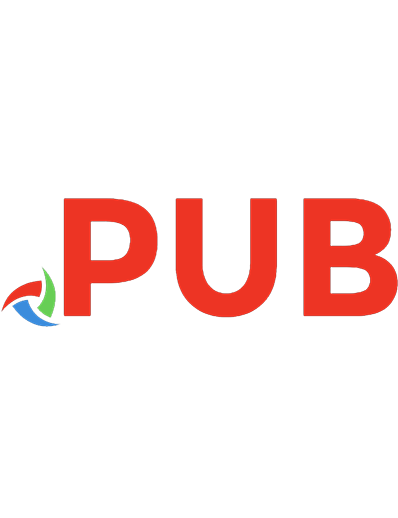Practical Salesforce Architecture: Understanding and Deploying the Salesforce Ecosystem for the Enterprise 9781098138288
Once renowned as a customer relationship management tool, Salesforce has evolved into a cloud-first application and capa
204 46 6MB
English Pages 183 Year 2023
Table of contents :
Foreword (…Looking Statement)
Who This Book Is For
Why I Wrote This Book
What This Book Will Not Attempt
How This Book Is Organized
Architecture Versus “Market-tecture”
Mental Hurdles and the Best Features of Salesforce
Conventions Used in This Book
O’Reilly Online Learning
How to Contact Us
Acknowledgments
1. Main Application Functionality and Capabilities
Salesforce and Clouds
What’s in a Name?
2. How It All Works
Basic Concepts of the “Full Stack”
Basic Product Stacks
Physical Systems and Infrastructure Concepts
Multitenant
Oracle
Hyperforce (the Future of the “Metal”)
Enterprise Architecture Capabilities
PaaS
Integration Platform as a Service (IPaaS)
Business Intelligence
Documents and Collaboration
Collaboration and Chat
BPM, RPA, and Low-Code
Application Development
Extensible Headless Compute (Lambdas)
Enterprise Software Capabilities
Platforms
Components
Features
Applications
Functional Capabilities and Products
Summary
3. Platform Data Concepts
Basic Technical Architecture of an RDBMS
Tables and Rows
Relationships
RecordTypes
Triggers and Flows
Big Objects (NoSQL)
External Objects (Mapped Data Sync) and Files
Remote Data Queries
Flat File Data
The Good
The Gotchas
The Growth
Summary
4. Data and Architecture Constraints
Complexity Boundaries
Size Boundaries
Compute Boundaries
I/O Boundaries
Object Polymorphism (Reusing Objects)
Built-in Advanced Database Functionality
Geography
Iterative Design
Master Data Management
Reporting
Bulk Import of Data
The Good
The Gotchas
The Growth
Summary
5. Middleware and Connectivity
For Aspiring Architects
Outbound: Server-Side Calls
Inbound: Remote System Calls
Client (Browser) Side
Middleware
Event-Driven Architecture
OAuth
The Good
The Gotchas
The Growth
Summary
6. Collaboration
Collaboration Is More Than Just Sharing
Chatter
Groups
Teams
Files
Reports
Quip
Slack
The Good
The Gotchas
The Growth
Summary
7. Security
Single Sign-on
Identity Management
Encryption
Permission Containers
Profiles
Roles
Permissions, Permission Sets, and Permission Set Groups
Manual Sharing
Effective Permissions
The Good
The Gotchas
The Growth
Summary
8. Programming and Customization
How to Discern Platform Capabilities
Customization Options and Limits
Coding Options
Apex
Visualforce
Aura
Lightning Web Components
Flows
Process Builder (Deprecated)
Workflow Rules (Deprecated)
Salesforce Functions
Package Development and Use
The Good
The Gotchas
The Growth
Summary
9. Mobile Platforms and Customization
Mobile Application Types
Salesforce Mobile App
Salesforce Mobile Publisher
Salesforce Field Service
The Good
The Gotchas
The Growth
Summary
10. DevOps Systems and Patterns
Development Orgs (Sandboxes and Pipelines)
Metadata
Change Sets
DevOps Center
Validation and Test Code Coverage
Integrated Development Environments
Source Code Management Tools
Project and Team Management Tools
Orchestration Tools
Vulnerability Checking and Code Compliance Tools
Designing for DevOps and Release Management (Beware of “Darkitecture”)
The Good
The Gotchas
The Growth
Summary
11. The Architect
Builders Versus Architects
The Different Types of Architect Roles
Success Architect
Operational (Project) Architect
Solution Architect
UX Architect
The Certified Technical Architect (CTA)
Communication
Documentation
Selecting What to Document or Diagram
The city view
Complexity
Points of failure
Diagramming Practices
Where Should I Start?
What Are the Key Concepts/Groups? (Level 0)
What Are the Important Details? (Level 1)
The Details (Levels 2+)
Where Does It Stop?
Acting Like an Architect
Summary
12. Salesforce Well-Governed
Data Governance
Concern: Data Interpretation
Governance Strategies: Data Interpretation
Concern: Data Fields and Relationships
Governance Strategies: Data Fields and Relationships
Concern: Data Storage
Governance Strategies: Data Storage
Security
Concern: Data Security
Governance Strategies: Data Security
Concern: Sandbox Security
Governance Strategies: Sandbox Security
Customization
Concern: Code Organization
Governance Strategies: Code Organization
Concern: Automation Orchestration
Governance Strategies: Automation Orchestration
Concern: Nimble Versus Stable
Governance Strategies: Time to Market Versus Stability
Summary
13. Roll-up and Summary
Index


![Practical Salesforce Architecture: Understanding and Deploying the Salesforce Ecosystem for the Enterprise [1 ed.]
1098138287, 9781098138288](https://dokumen.pub/img/200x200/practical-salesforce-architecture-understanding-and-deploying-the-salesforce-ecosystem-for-the-enterprise-1nbsped-1098138287-9781098138288.jpg)


![Salesforce Lightning platform enterprise architecture : architect and deliver packaged applications that cater to enterprise business needs [Third edition.]
9781789953664, 1789953669](https://dokumen.pub/img/200x200/salesforce-lightning-platform-enterprise-architecture-architect-and-deliver-packaged-applications-that-cater-to-enterprise-business-needs-third-edition-9781789953664-1789953669.jpg)




